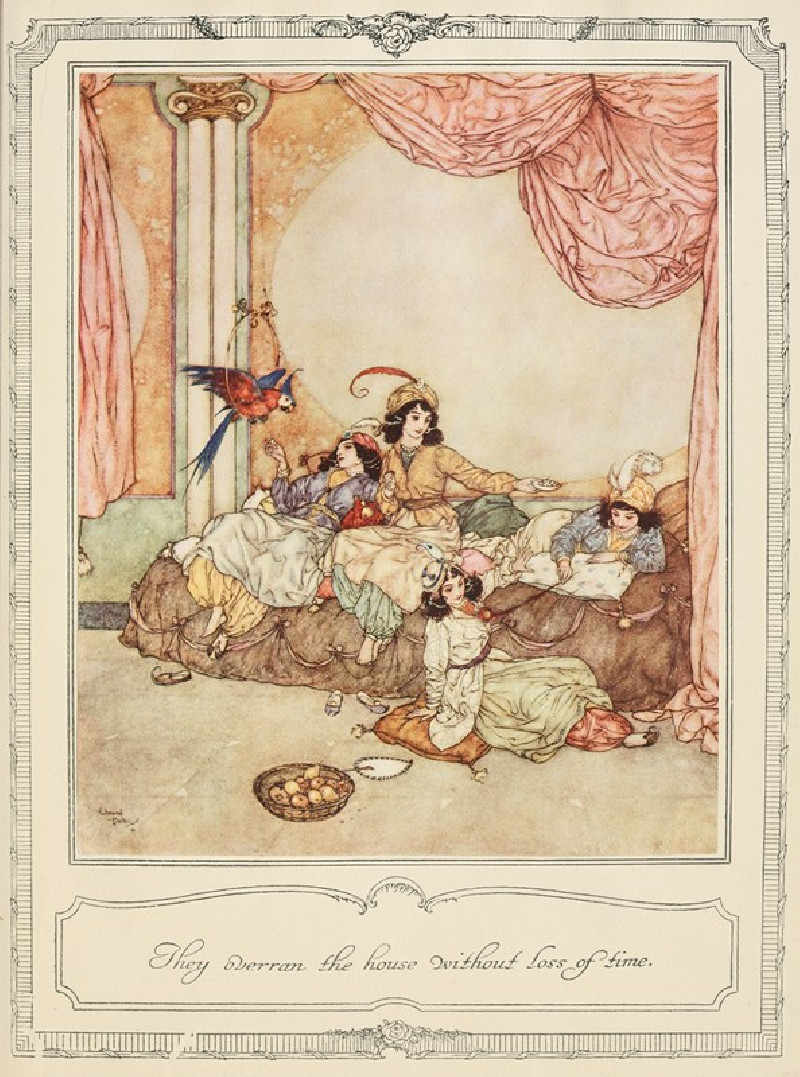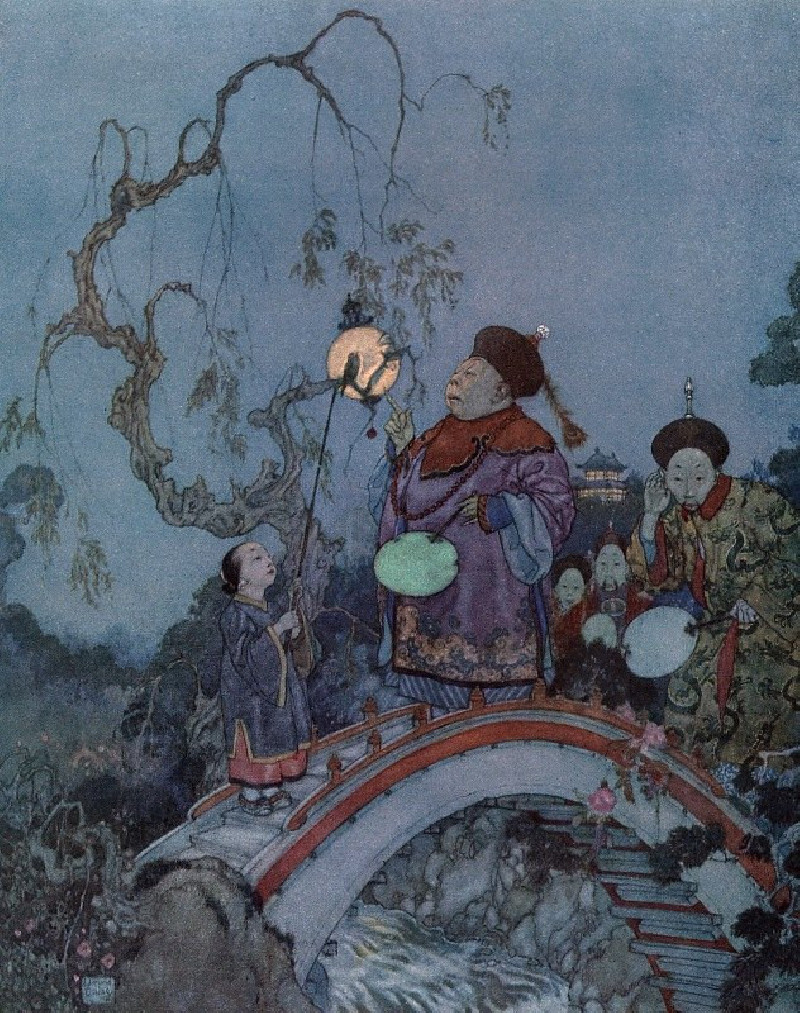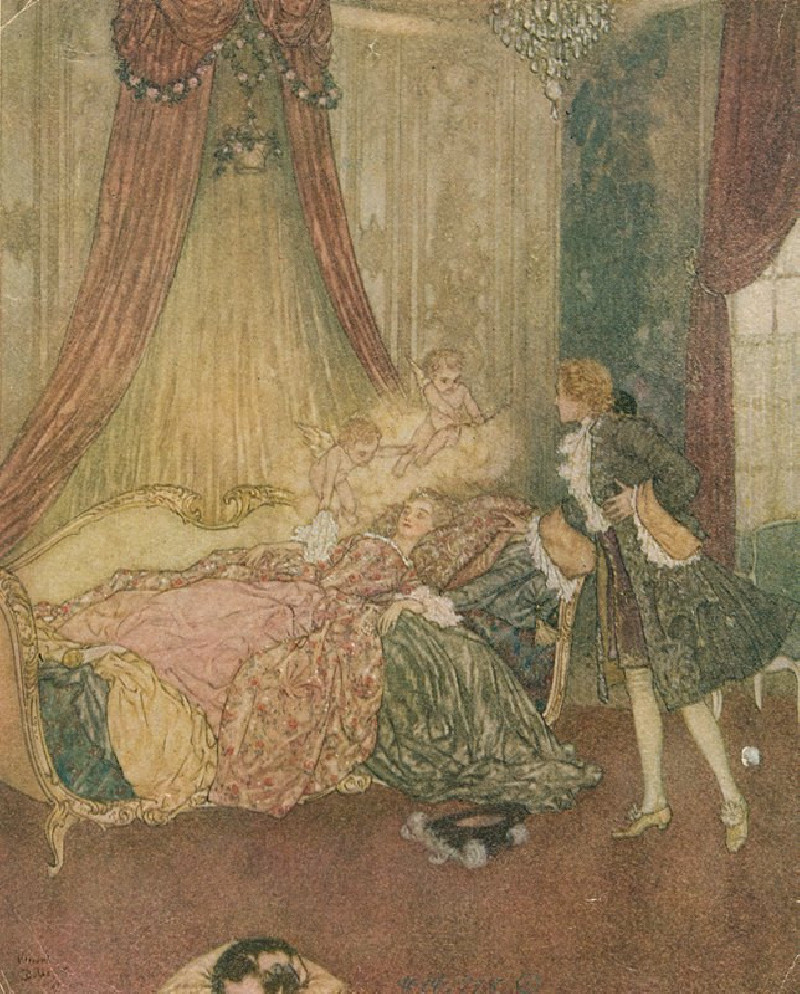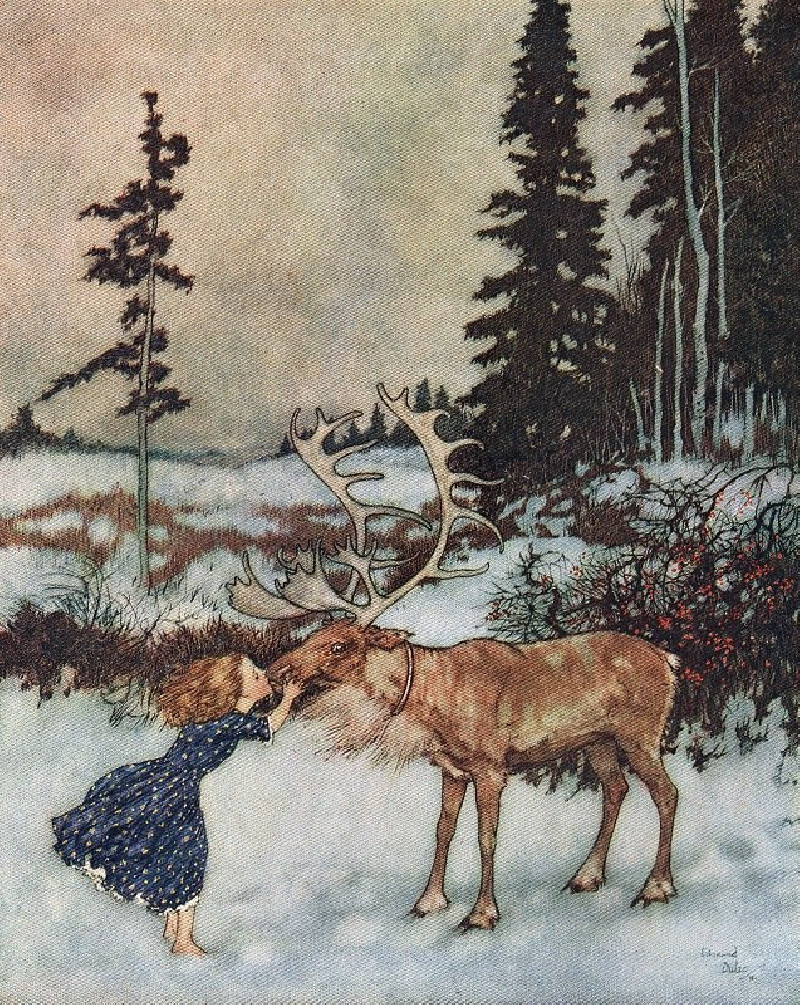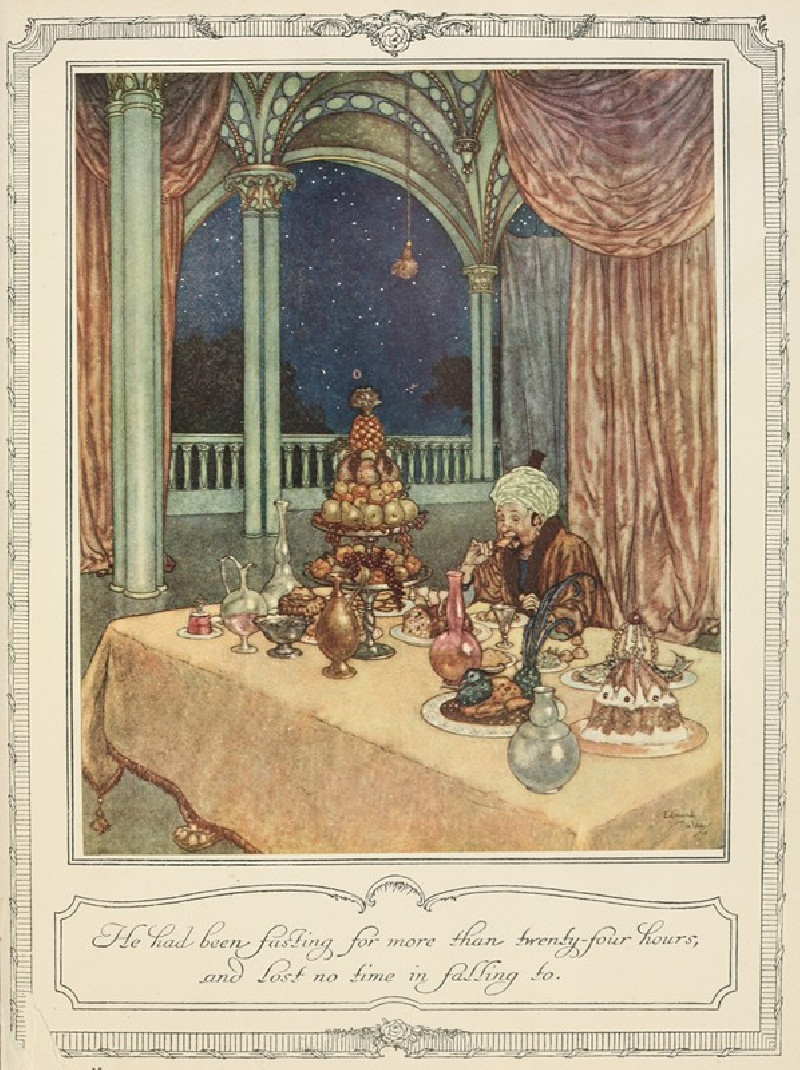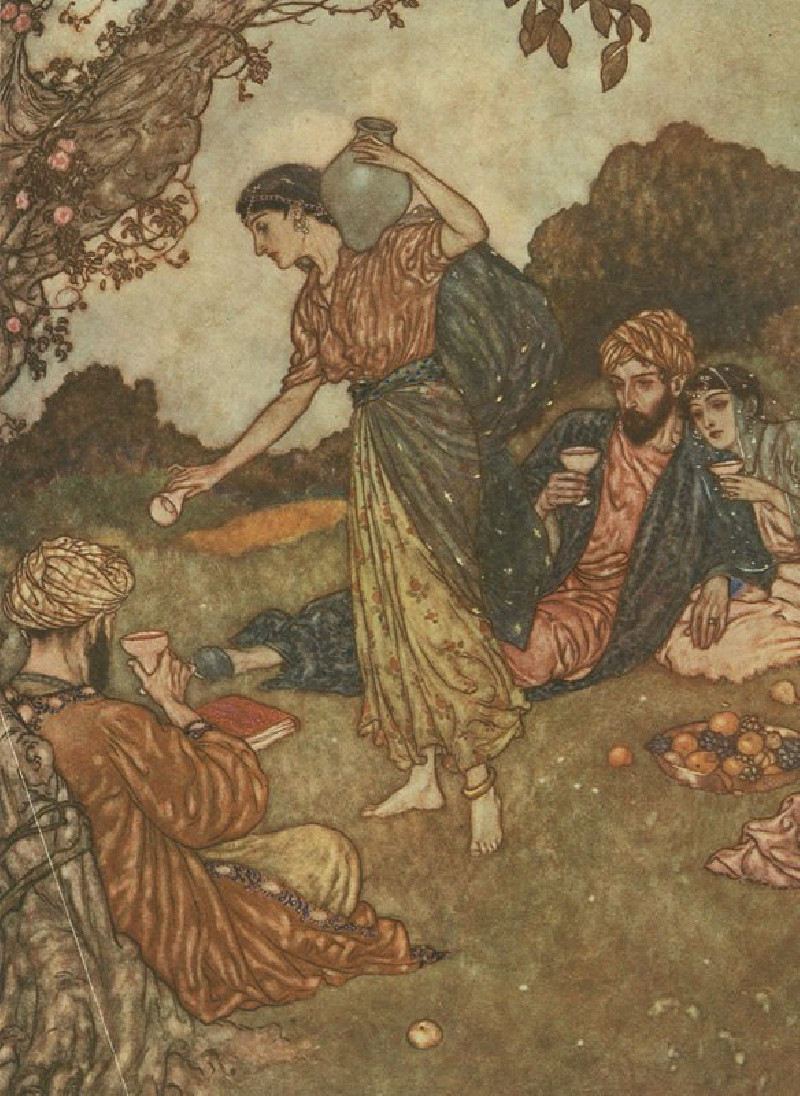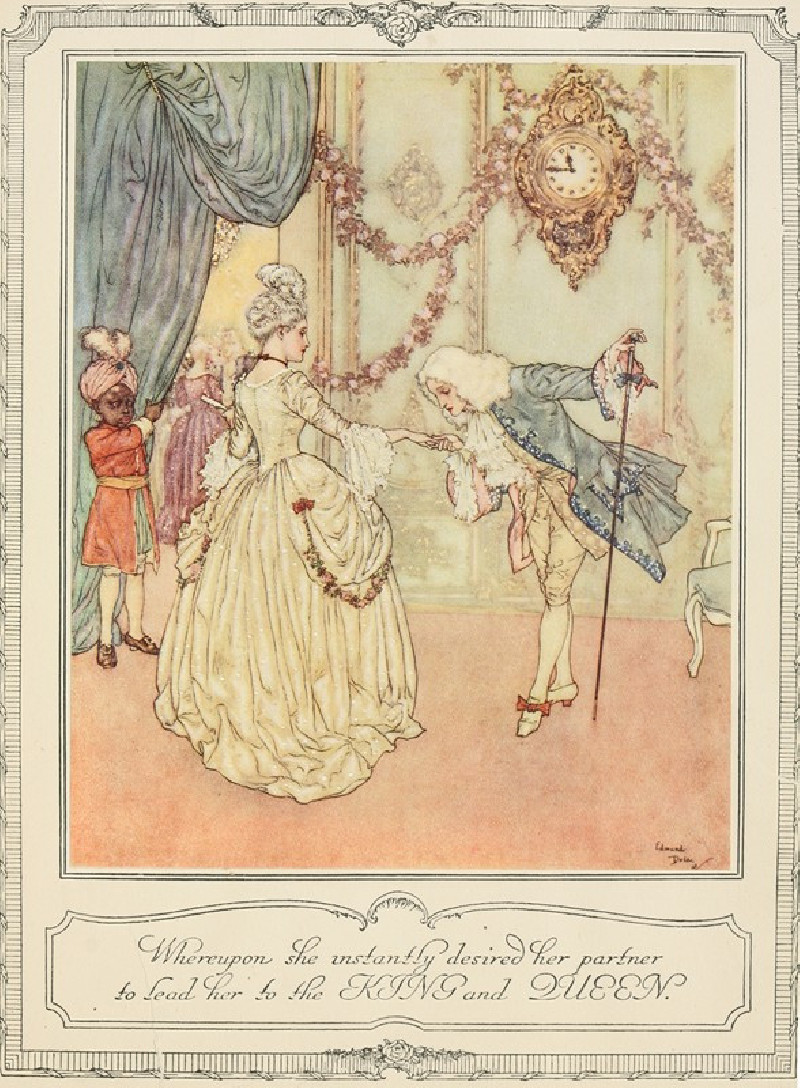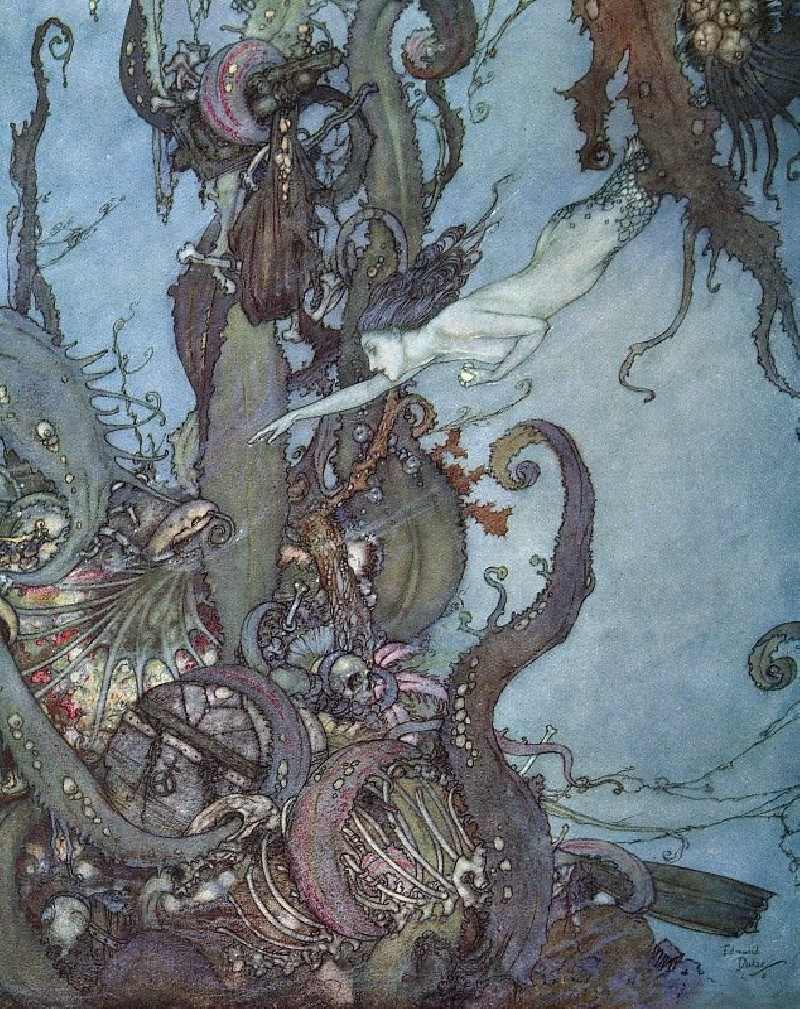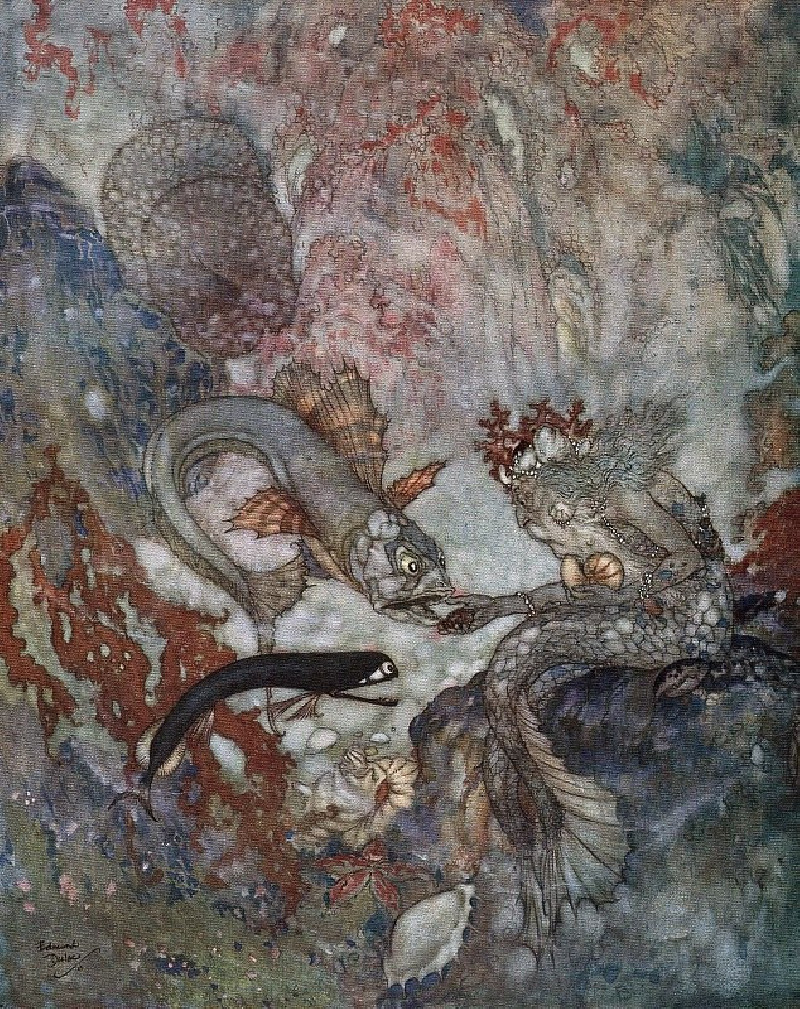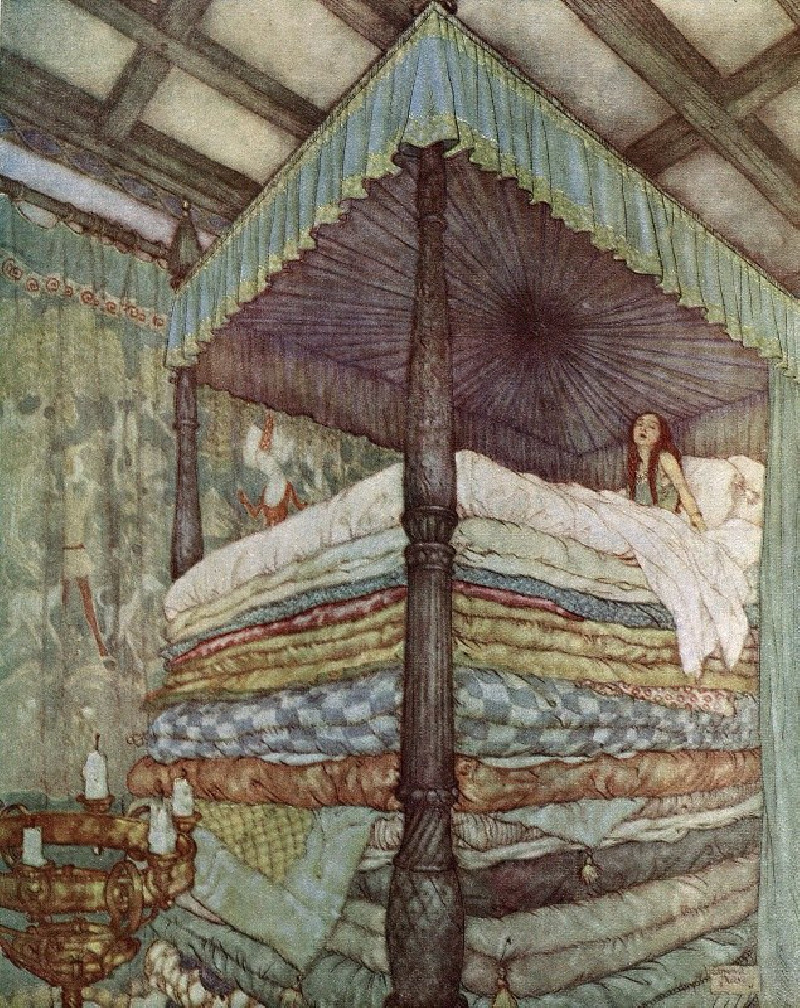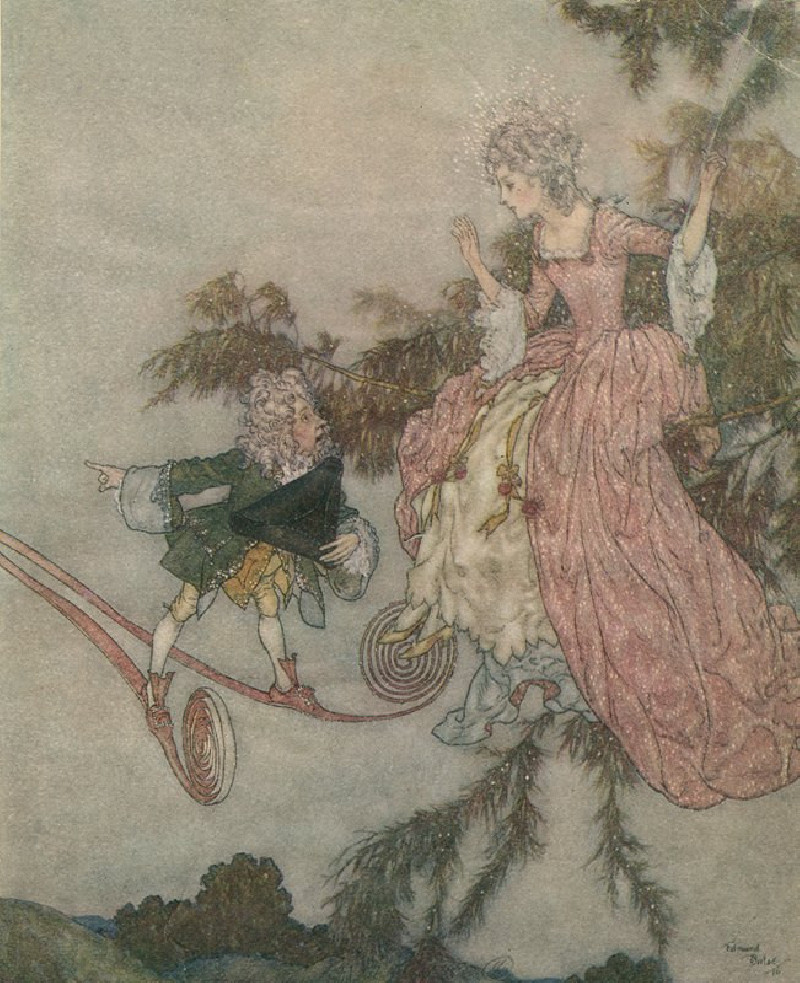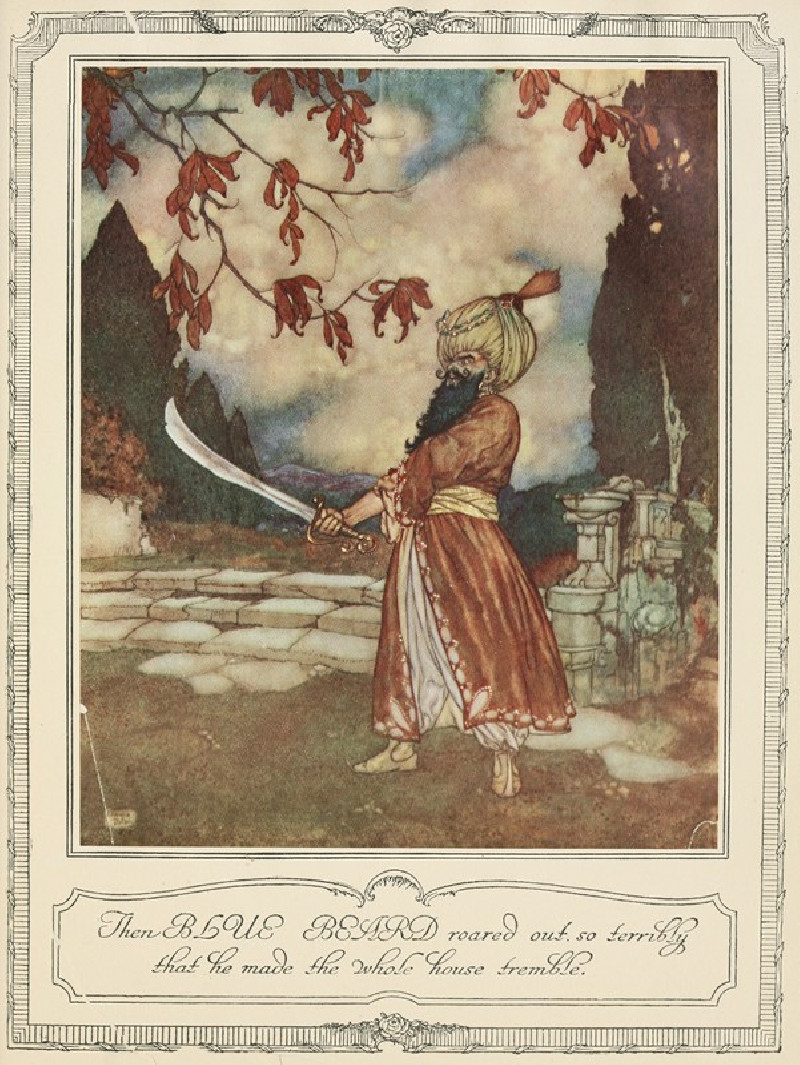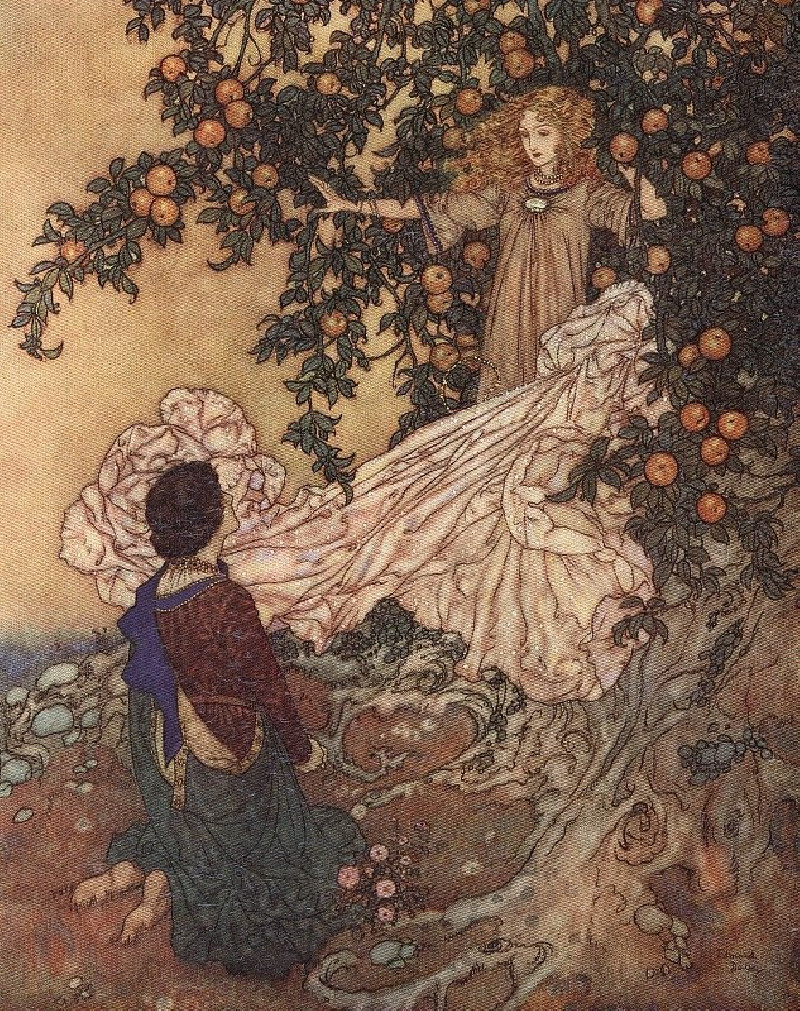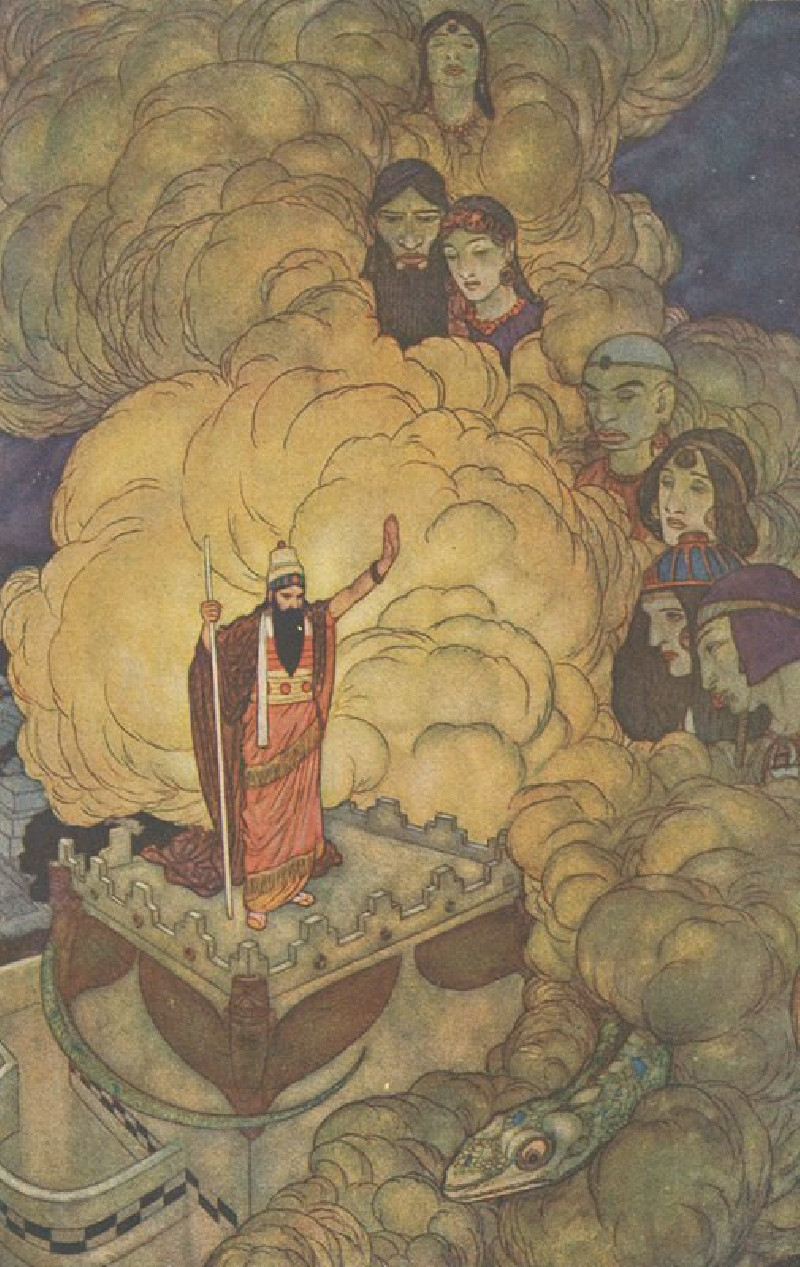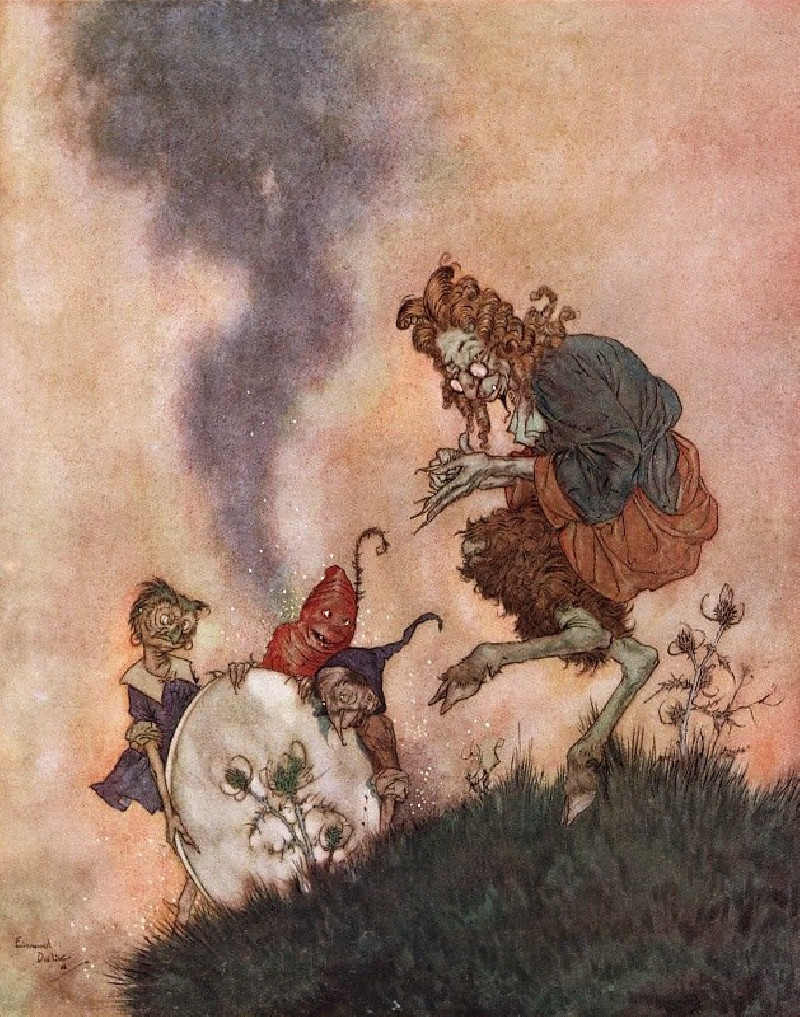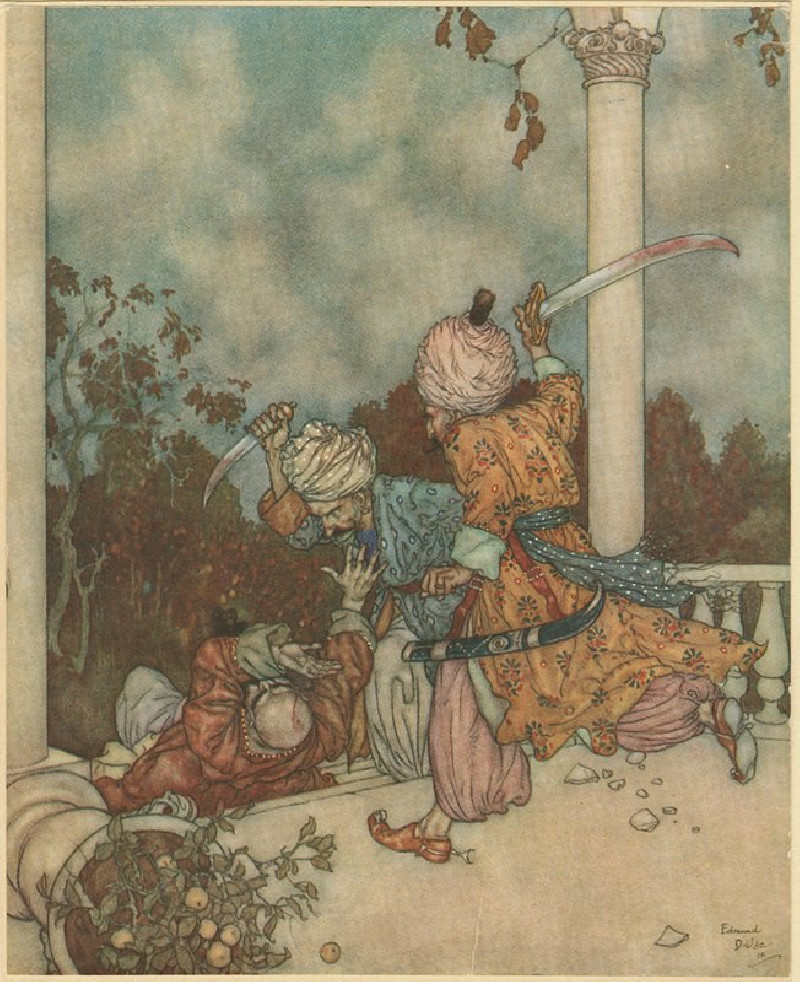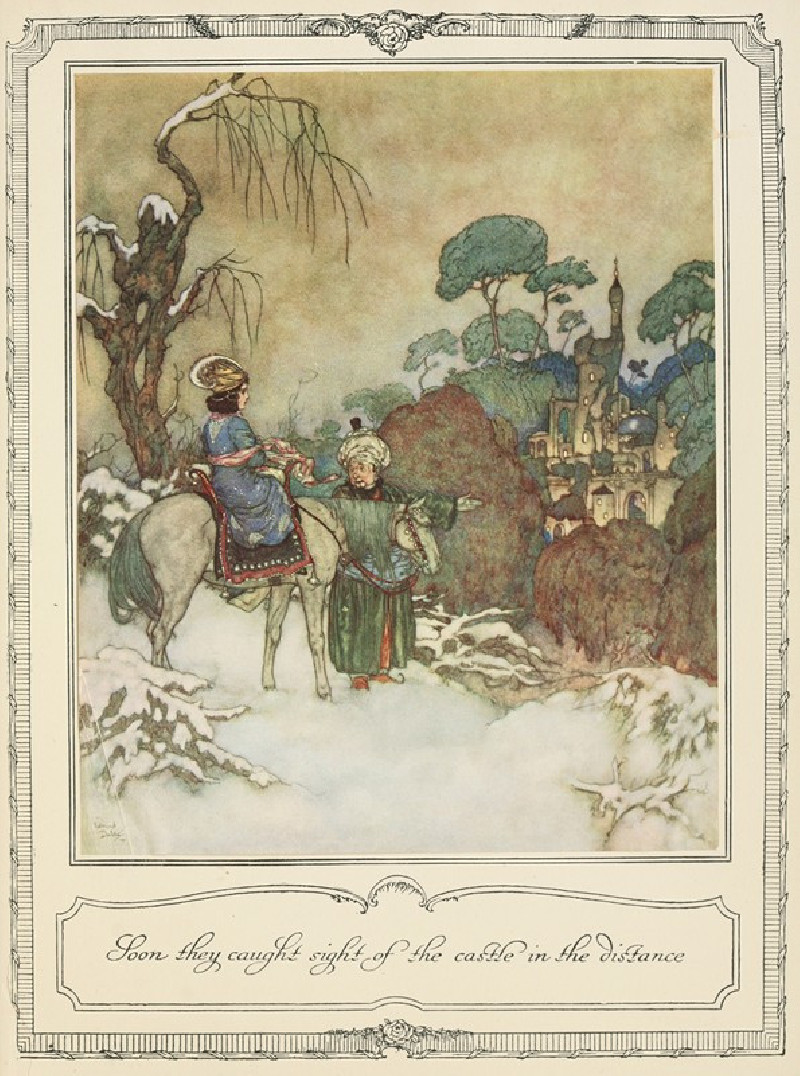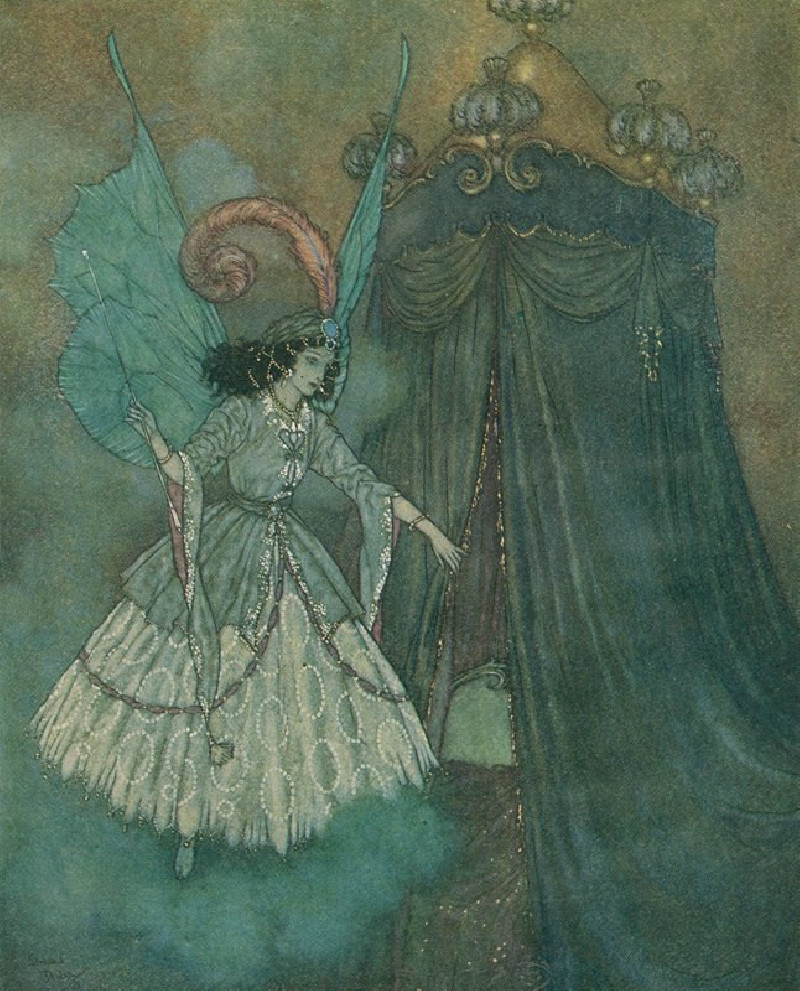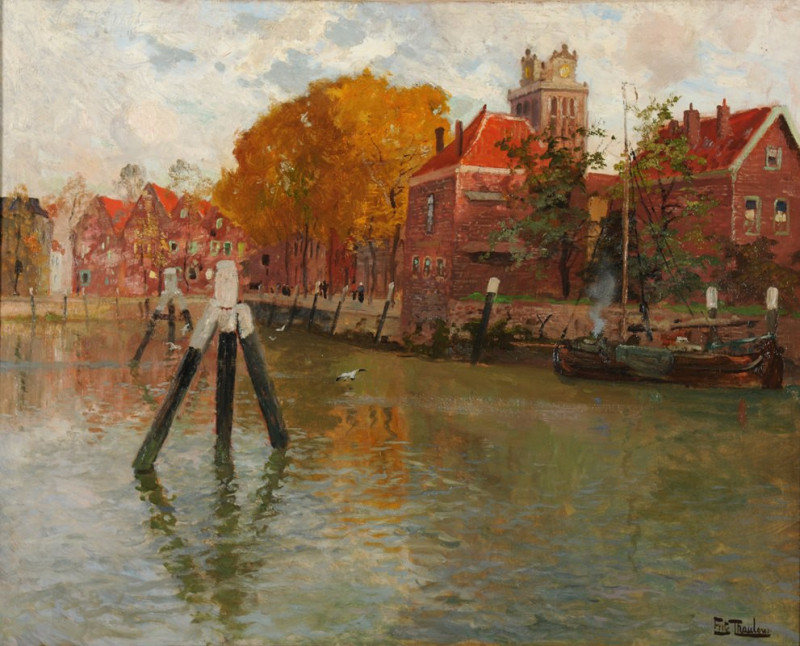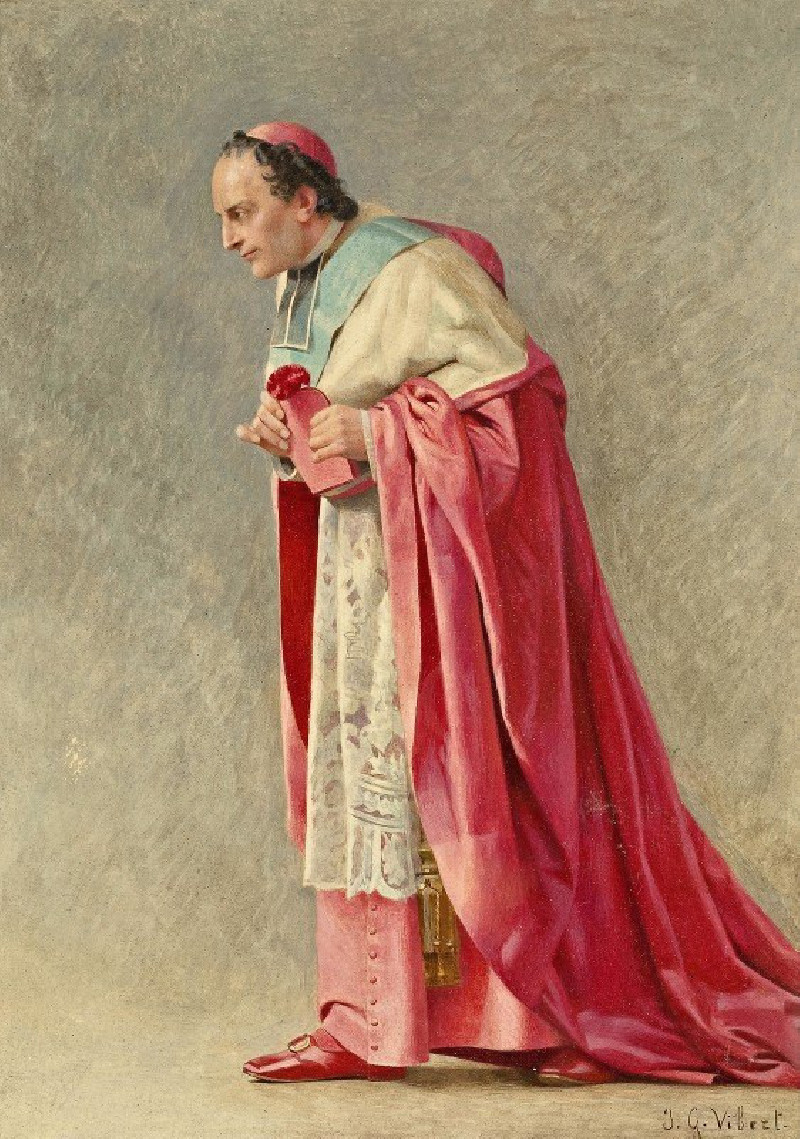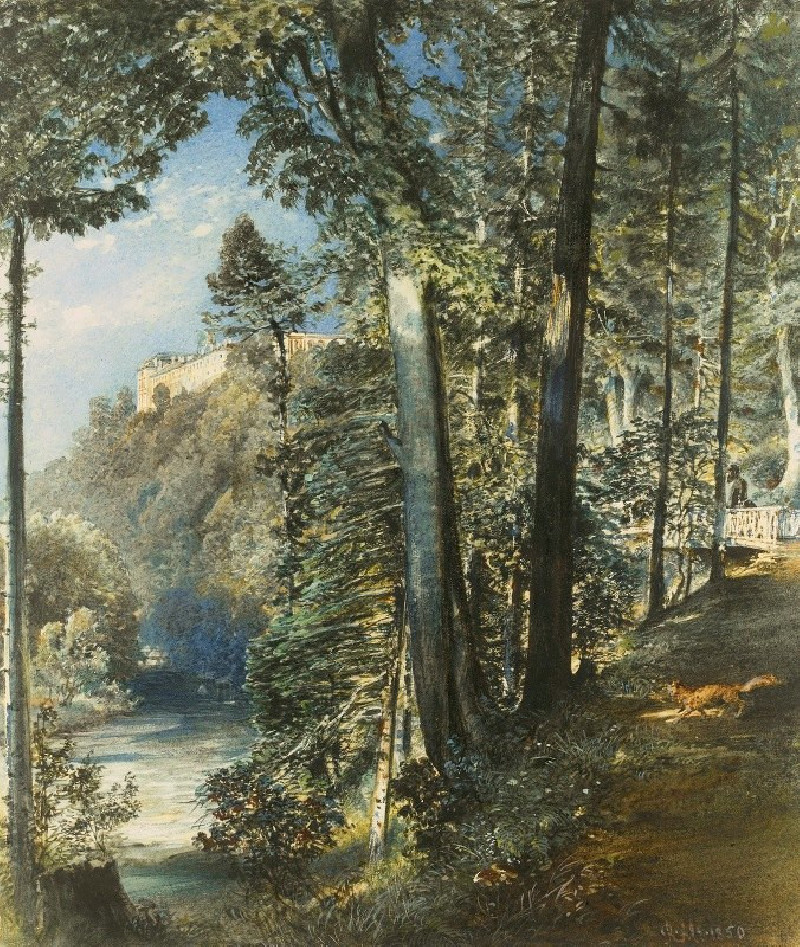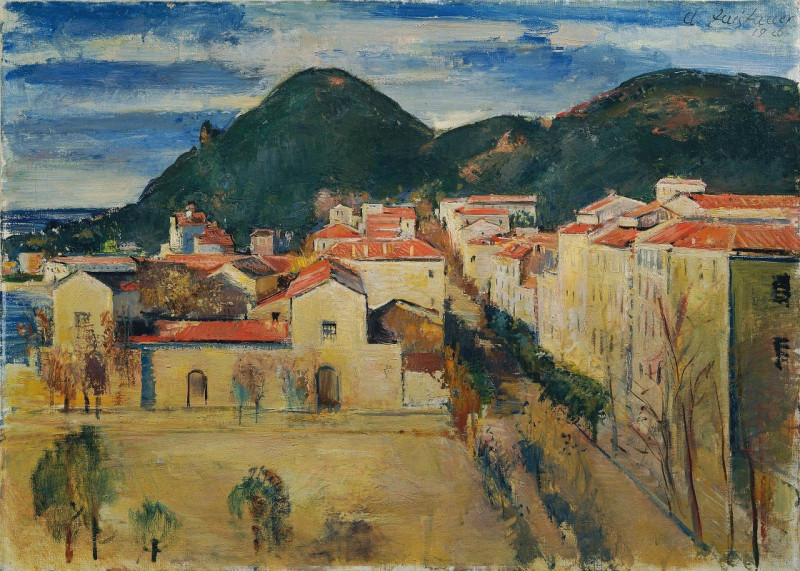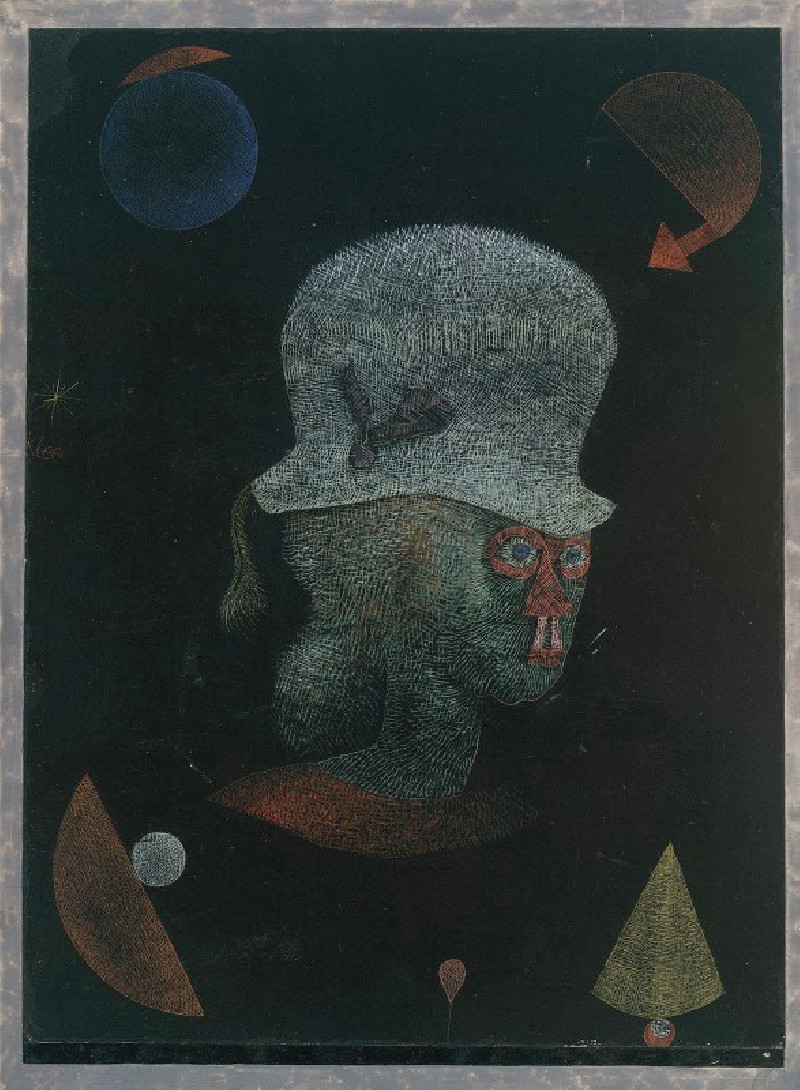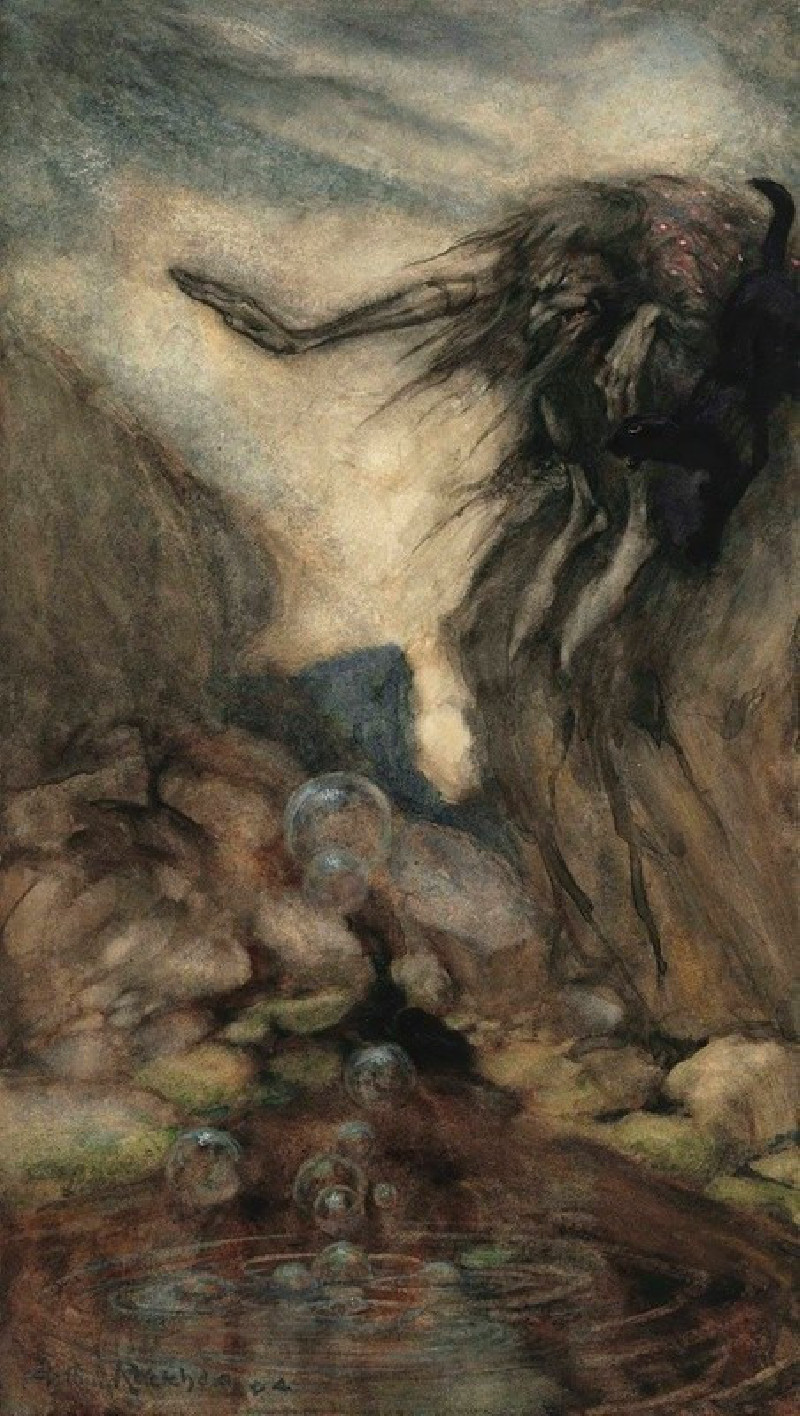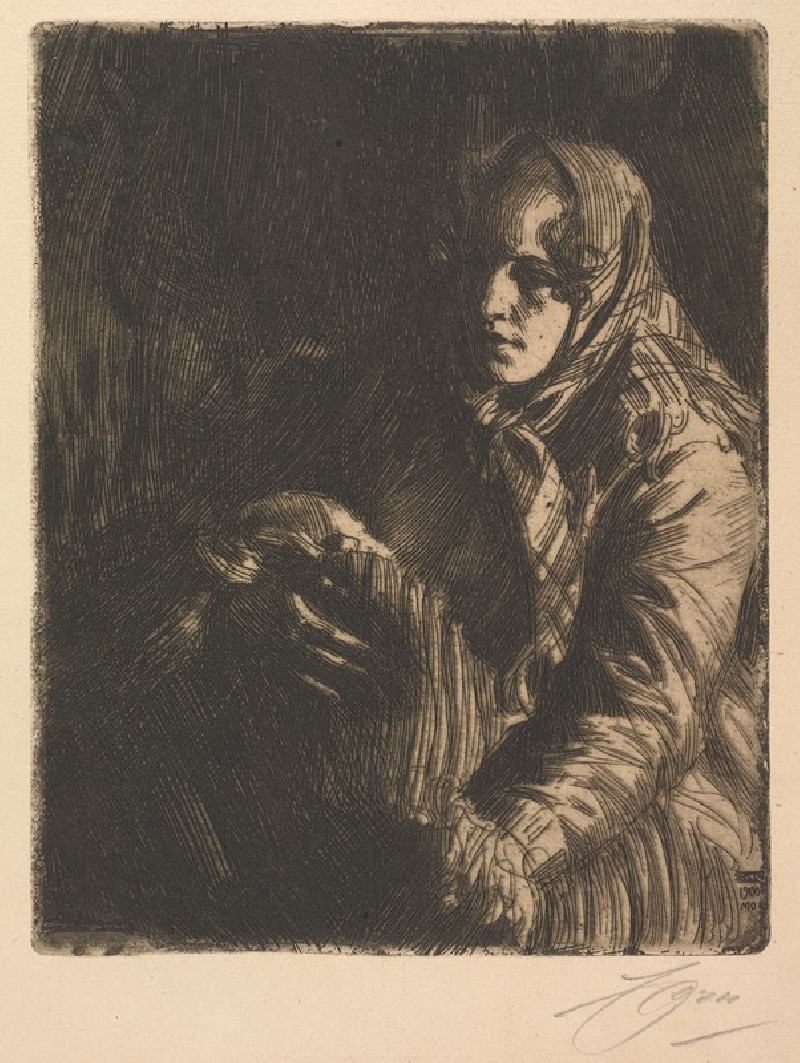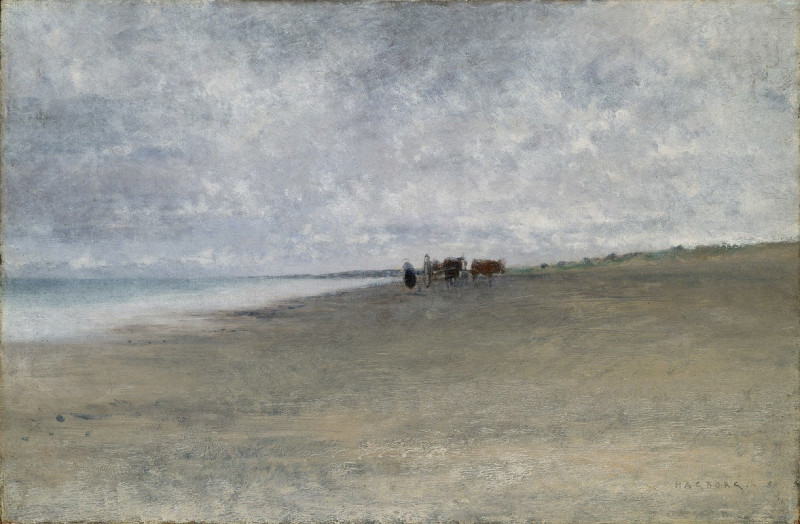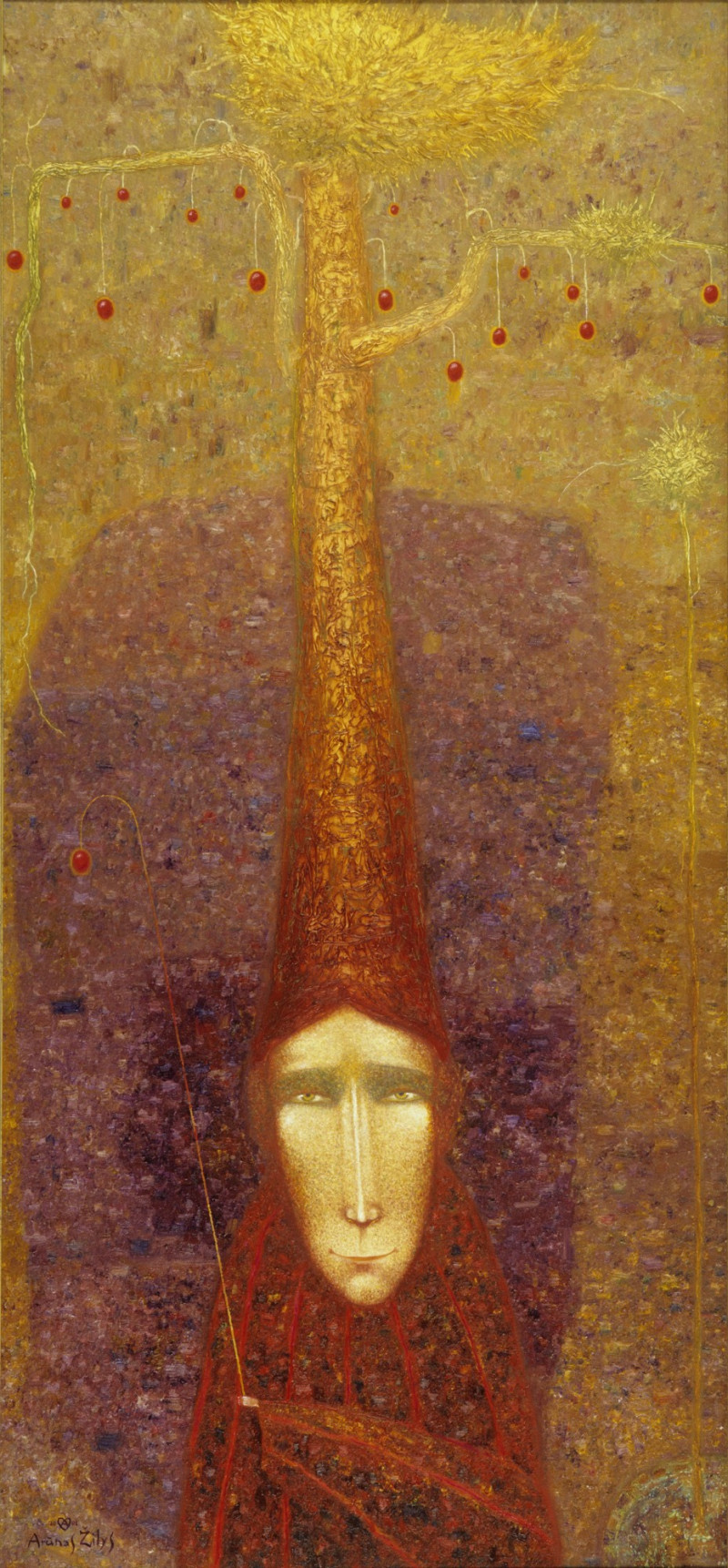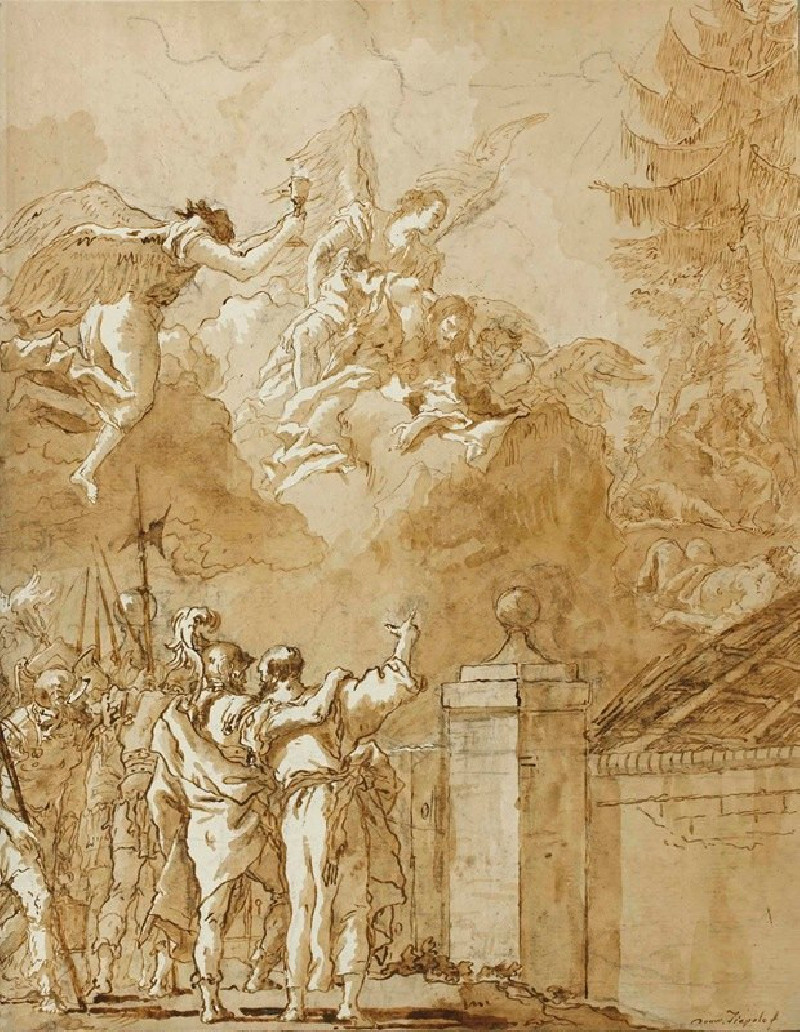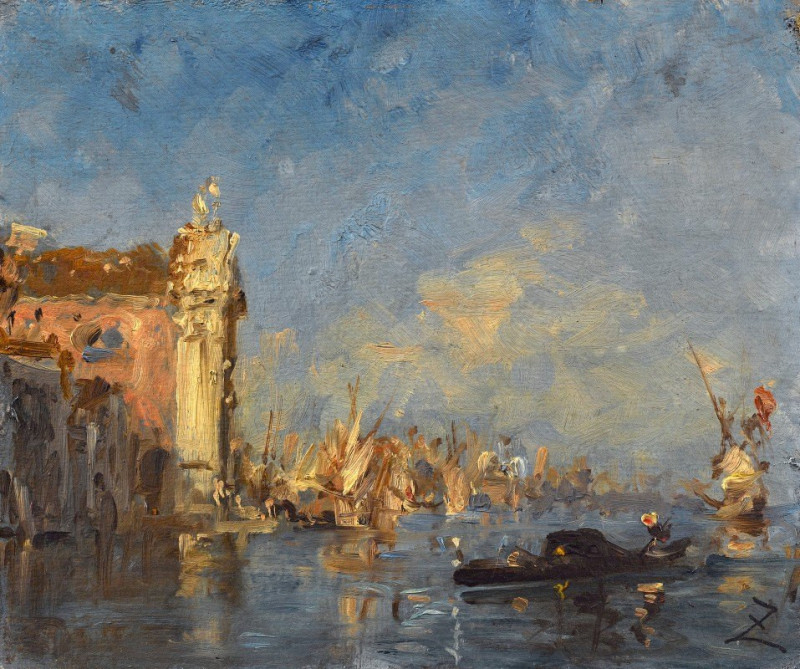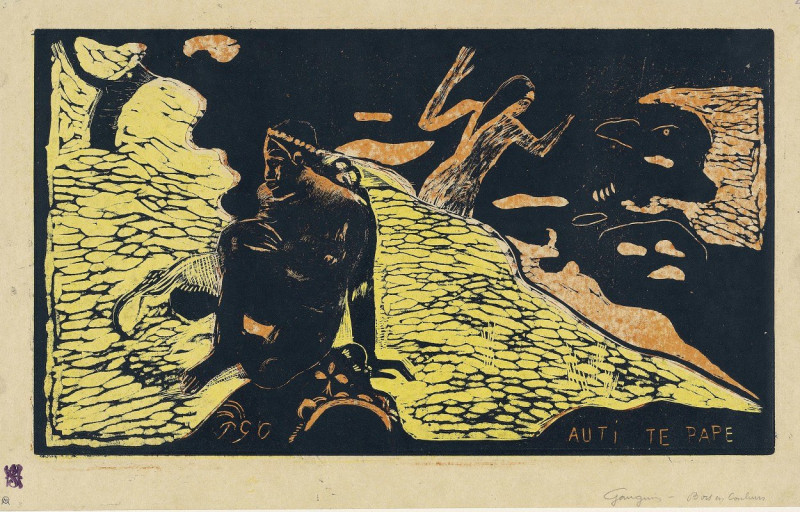They overran the house without loss of time (1910)
Technique: Giclée quality print
Recommended by our customers
More about this artwork
Edmund Dulac's exquisite 1910 painting, "They Overran the House without Loss of Time," encapsulates the wonder and whimsy often found in his illustrations. This artwork is a visual portrayal that evokes a sense of magical intrusion into a sumptuous, yet serene domestic setting.In this piece, a group of seven young girls, adorned in colorful and varied attire, are depicted engaging playfully on an opulent reclining lounge. Their postures and expressions convey movement and gentle chaos, suggesting a sudden, lively takeover of the space. Each character brings a unique element to the scene, dressed in flowing robes and dresses, embodying the spirited innocence and mirth of childhood.The soft pastel colors and delicate lines used by Dulac enhance the dreamlike quality of the scene. An intriguing detail is the vibrant red and blue bird flying overhead, adding a touch of vivid color and a metaphorical sense of freedom and whimsy. Above the figures, draped fabrics in shades of pink create a canopy that adds to the ethereal atmosphere.The surrounding architecture and décor hint at a classical influence, with a Corinthian column and ornate detailing framing the scene, contrasting with the playful disruption caused by the girls. Dulac's ability to blend reality with fantasy shines through in this representation of youthful exuberance and fairytale charm.
Delivery
Returns
Edmund Dulac (born Edmond Dulac; 22 October 1882 – 25 May 1953) was a French-British naturalised magazine illustrator, book illustrator and stamp designer. Born in Toulouse he studied law but later turned to the study of art at the École des Beaux-Arts. He moved to London early in the 20th century and in 1905 received his first commission to illustrate the novels of the Brontë Sisters. During World War I, Dulac produced relief books and when after the war the deluxe children's book market shrank he turned to magazine illustrations among other ventures. He designed banknotes during World War II and postage stamps, most notably those that heralded the beginning of Queen Elizabeth II's reign.

